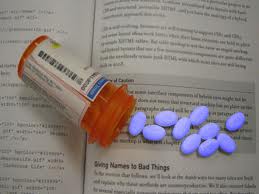Amphetamine abuse is more prevalent today than most individuals know. While amphetamines can be illegal substances like methamphetamine, the category also covers prescription amphetamine brands like Adderall and Vyvanse, popular drugs that are prescribed to individuals with ADHD and often abused. While amphetamine abuse is popular in many circles, it is more common with certain individuals, and it should be known that its abuse can cause many issues.
Who Is Most at Risk of Amphetamine Abuse?
Currently, those who are most at risk of abusing amphetamines are teens and, more specifically, college students. According to OHSU, “5-35% college age students reported non-prescription use of prescription stimulants” in 2008. Adderall is one of the most commonly abused prescription amphetamines, and this group is more likely to abuse it and other stimulants than individuals who are not in college.
Some of the statistics involving amphetamine abuse on college campuses are:
- “Among persons aged 18 to 22, full-time college students were twice as likely to use Adderall nonmedically in the past year as those who had not been in college at all or were only part-time students” (SAMHSA).
- “22% of students with stimulant prescriptions took higher doses than prescribed” (OHSU).
- “Full-time college students who had used Adderall nonmedically in the past year were more likely to be polydrug users in the past year than their non Adderall using counterparts, that is, both drink alcohol and use other drugs” (SAMHSA).
How Common are Emergency Room Visits as a Result of Amphetamine Abuse?

Amphetamines and methamphetamines are some of the most addictive drugs available.
Amphetamine, and other stimulants, can “increase blood pressure, heart rate, and body temperature and decrease sleep and appetite” (NIDA). These results can be dangerous, but high doses of the drug “can lead to serious cardiovascular complications, including stroke,” which can cause many visits to the emergency room.
According to SAMHSA, “Drug abuse related emergency department visits involving amphetamines or methamphetamines increased 54% in the nation (from 25,245 to 38,961 emergency department visits) between 1995 to 2002.” SAMHSA further confirms that “more than 60% of emergency department visits involving amphetamines or methamphetamines also involved other drugs in 2002.”
Are Individuals Receiving Treatment for Amphetamine Addiction and Abuse?
SAMHSA states, “From 1995 to 2005, the percentage of substance abuse treatment admissions for primary abuse of methamphetamine / amphetamine more than doubled from 4% to 9%.” However, this does not mean that all individuals who need treatment are getting it.
SAMHSA states that “169,500 [of the 1.8 million substance abuse treatment admissions in 2005] were for primary methamphetamine / amphetamine abuse” while “an estimated 1.4 million persons aged 12 or older… had used methamphetamine” in 2004 (SAMHSA). Because methamphetamine is one of the most addictive stimulant drugs and its abuse is often a sign of further drug and stimulant abuse, the treatment statistics are not proportionate to those who need it.
While treatment admissions for amphetamine abuse are increasing, so is the abuse of these drugs. Emergency room visits are also on the rise which shows the dangers of overdosing on amphetamines. Overall, abuse of these drugs is still severe and on the rise, especially among college students and young people.
